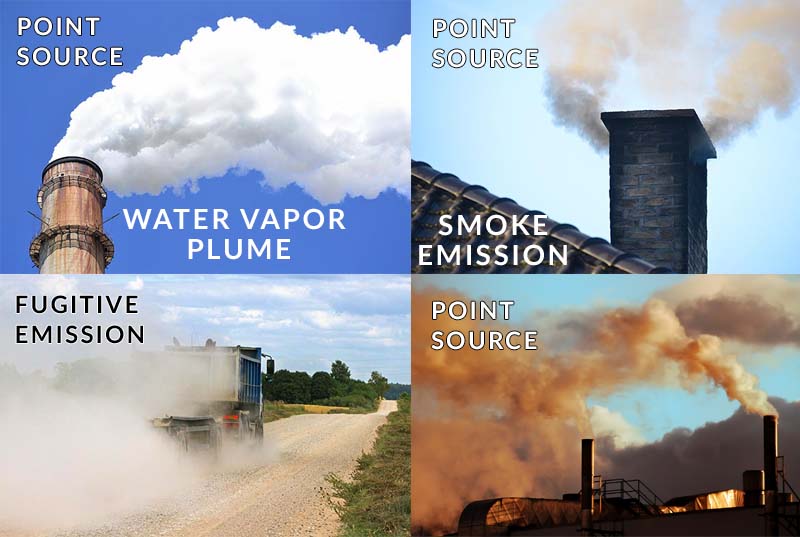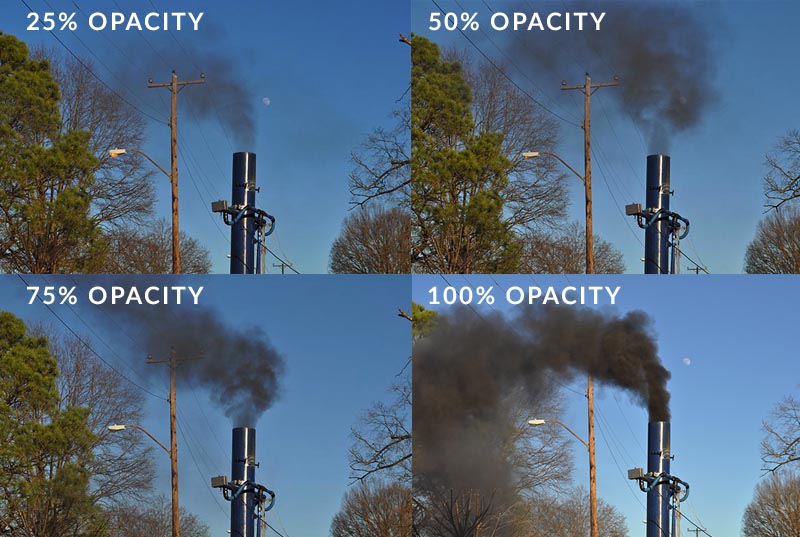Visible Emissions and Opacity
Excerpt from Online Visible Emissions Course
Return to VEO course summary page »

Definition of Visible Emissions
Visible emissions are emissions that can be seen by the human eye. Heat distortions and condensed water vapor are NOT considered visible emissions.
- Visible emissions include gas, vapor, and particulate matter.
- There are two types of visible emissions: point source emissions and fugitive emissions.
- Point source emissions are typically released by stationary sources such as smokestacks and chimneys. A point source is defined by a longitude, latitude, and elevation and is defined in your organization's air permit. EPA methods are used for evaluation of all sources of visible emissions, including transfer points, piles of dusty materials, unpaved roads, and fence line monitoring.
- Fugitive emissions are unintended releases. They may be a result of sanding, driving vehicles on a dirt road, mechanical failures that release material from ductwork, or from building openings, etc.
- Visible emissions are regulated requirements are promulgated at the federal level through the Environmental Protection Agency (EPA), and at state and local jurisdictions.
- EPA Method 9 evaluates and quantifies emissions.
- EPA Method 22, known as the fugitive emissions method, evaluates the presence of emissions.
- EPA Quick-Check is what Compliance Assurance defines a "look and see" observation to determine if there are any emissions from sources. If emissions are seen, a visible emission observation by a specific EPA method is triggered.
EPA Method 9 requires certification, i.e., successful qualification at a smoke school. EPA Method 22 does not require certification, but observers should be knowledgeable about the principles of Method 9 readings. From a practical standpoint, the Method 22 observer needs to tell the difference between heat distortion, condensed water vapor, and a visible emission. Attendance at a field training smoke school is helpful for Method 22 observers, but not required.
What is Opacity?
In the visible emissions industry, opacity is defined as the percentage of the background that is obscured (i.e., blocked) by visible emissions, i.e., the plume's ability to obscure the background. A higher opacity value in a visible emission observation means there is more particulate matter in the emission, and less of the background is seen.
When reading the opacity of a plume, the background should have a high degree of contrast (both in color and luminescence) against the smoke to facilitate the reading and the sun should MUST be at the back of the observer in the 140 degree sector behind the observer.
An opacity observer looks at the background; not the emission, not how much smoke is there.


